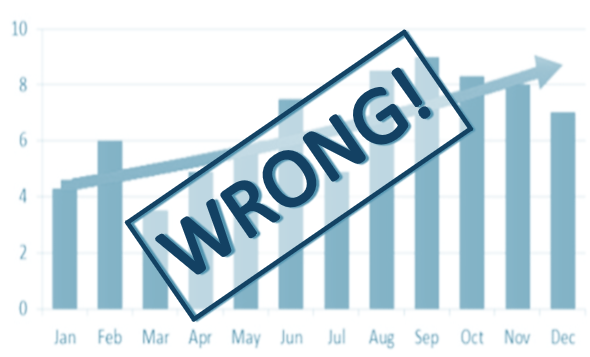Every day, squads of analysts and experts are deployed in the unending pursuit of establishing toeholds of future insight so that Executives and Boards can do what they are paid to do – make decisions that best drive value creation. And what is everyone’s favourite crystal ball? The financial model.
A beast of mathematical complexity, the financial model produces forecasts of cashflow, EBITDA and/or net profit tailing off into the future. When appended to the associated business case or operational/strategic plan, it draws the line in the sand for the decision-maker, without which, making a decision would be a wild stab in the dark.
But over-confidence bias obscures the fact that a financial forecast is – almost certainly – wrong!
You may ask how we can be so certain that a financial forecast cannot be certain and isn’t that over-confident and oxymoronic?
It comes down to probability.
Financial models have variable assumptions like fairy bread has hundreds and thousands. What will happen to market growth, competitor responses, supplier incentives, freight rates, FX rates, commodity prices, energy prices, equipment installation times, purchase price negotiations, union negotiations, interest rates, import tariffs, competition regulation … the list goes on.
Just how many assumptions are there? Detailed models could have assumptions in the thousands. And how many options are there for each assumption? With continuous data (like AUD/USD FX rate) there is technically an infinite number. But for illustration purposes, we will use a constrained twenty assumption model and restrict each assumption to just three discrete options – a low, medium and high. (To use AUD/USD FX rate for example, we can make the assumption that the probable options are 70c, 75c and 80c.)
So, let’s take twenty assumptions with three options each, knead and test them to the best of our expert and analytical capability and experience, plug our preferences into a multi-sheeted, formula infused Excel model and voila, we get one single and easy to interpret forecast result – out of 3.5 BILLION possibilities! (If you find that hard to believe, punch 3 to the power of 20 into your favoured calculating device to see for yourself).
Yes, the 3.5b possibilities include duplicate results in the same way 6 x 2 and 4 x 3 give the same answer and many results will not be materially different from one another. To take these factors into account, we can arbitrarily discount 99.999% of the possible results and we still only have a one in 35,000 chance of being right! And this is not taking into account that in reality there are typically a ridiculous number of material and possible options per assumption. Using our example assumption, the AUD to USD rate could quite feasibly slip below 60c (as it did in 2009), rise over 100c (more recently in 2013) or oscillate between both over the model timeframe. And what will that do to import costs, export sales or that USD denominated loan?
For amusement, next budget night (state or federal) watch how wrong our best financial bureaucrats are.
The table below averages the difference of the Commonwealth four-year forecast budget deficit/surplus (as a percentage of GDP) to the actual deficit/surplus for each budget since 2010.
Generously using ± 5% margin of error, not one of the 25 individual year forecasts were right. Most were hideously wrong. They didn’t even get lucky.
But don’t throw the financial forecast baby out with the uncertain bath water – there is a way to create a financial forecast that will assist decision-makers…which will be revealed in the next post!


